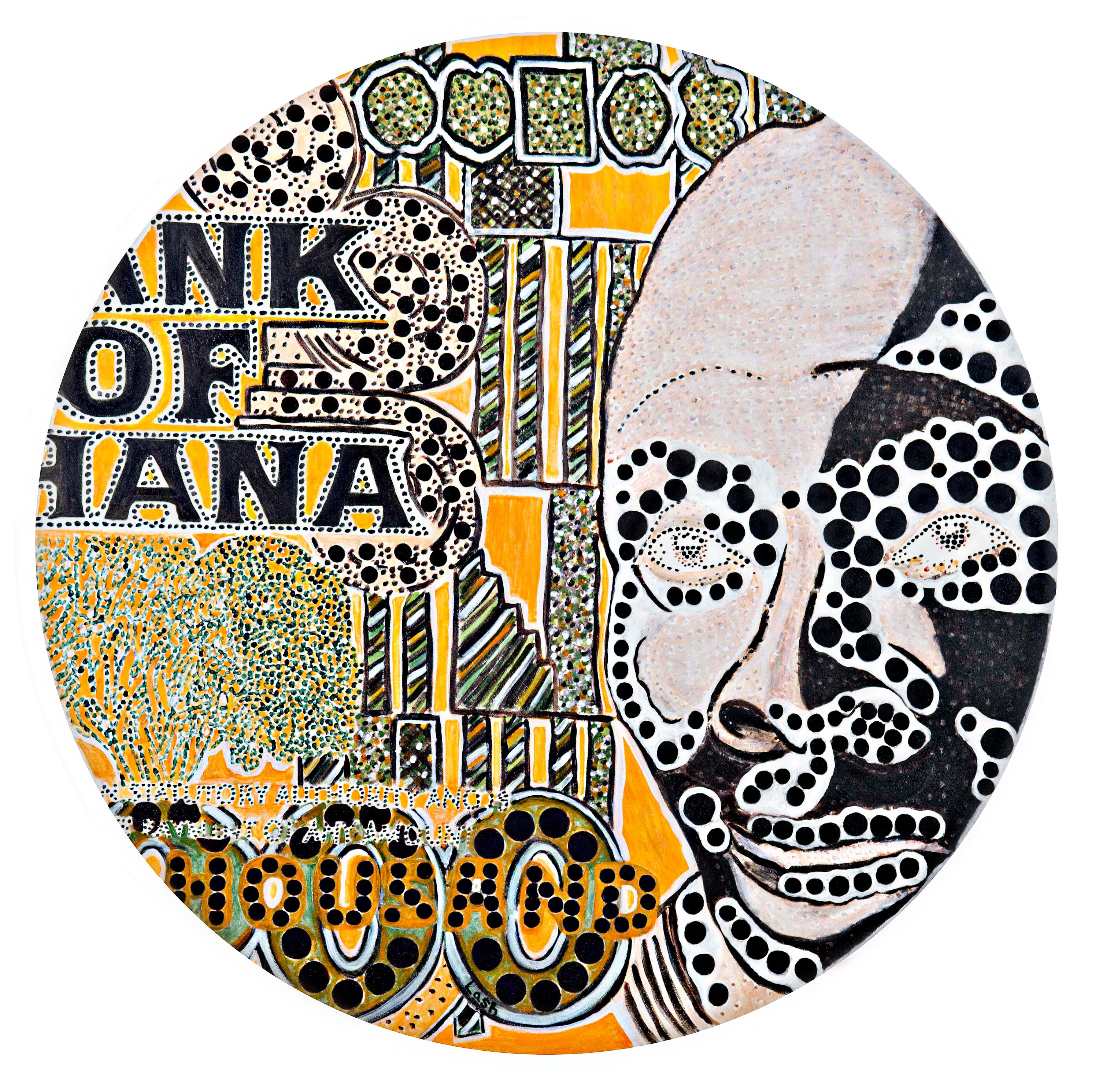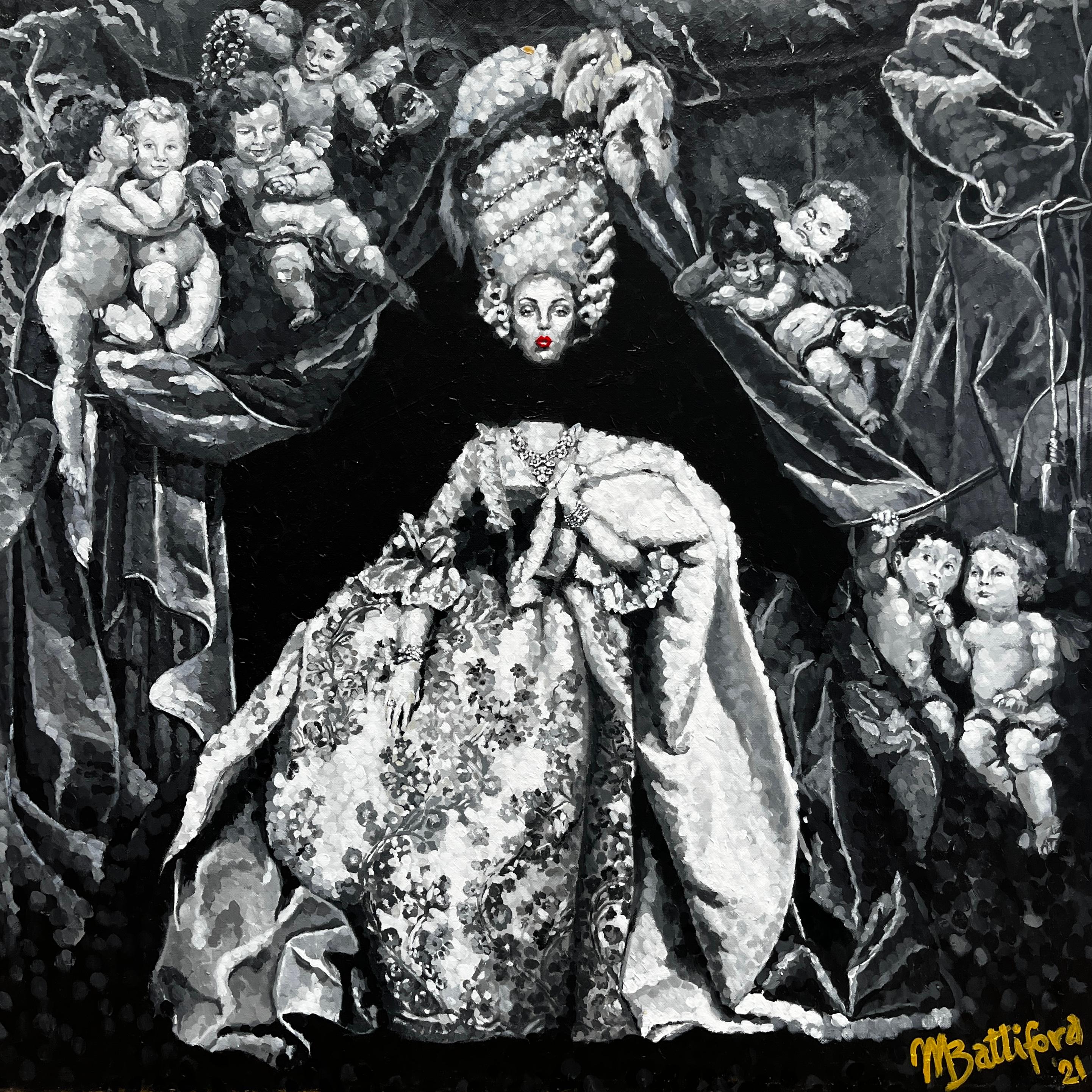Items Similar to A Young Girl Reading a Book, Pointillist Artist
Video Loading
Want more images or videos?
Request additional images or videos from the seller
1 of 11
Gustaf ArnoldsA Young Girl Reading a Book, Pointillist Artistc. 1930
c. 1930
About the Item
"A Young Girl Reading a Book" is a captivating portrait by Swedish artist Gustaf Arnolds.
Arnolds was a prolific painter whose roots began in Vingåker and later in Ronneby from his teenage years.
His educational journey in art took him through prestigious institutions such as Althins målarskola and the Tallbergska grafikskolan in Stockholm,
followed by a significant period at the Konstakademien, Stockholm, between 1904 and 1909. His talent and dedication were recognized early on, earning him a scholarship to Paris, a city that would deeply influence his artistic direction.
This particular work, likely painted shortly after his return to Sweden, reveals a profound influence from his time in Paris. It portrays a young girl absorbed in reading a book, a simple yet profound subject that Arnolds imbues with a sense of tranquility and introspection. The background hints at a serene landscape, dotted with quaint houses, a nod to the everyday beauty surrounding us. What sets this piece apart is Arnolds’ technique, reminiscent of pointillism but distinguished by longer, more expressive brush strokes that add a vibrant texture and depth to the canvas. This method showcases Arnolds' unique adaptation of the techniques he encountered during his Parisian studies, particularly during his interactions with Nils Dardel, his own studio work, and his education at the Académie Russe and André Lhote's school.
Arnolds’ second stint in Paris from 1922 to 1930 further refined his skills, drawing inspiration from Paul Cézanne and Cubism, which is subtly reflected in the structured yet fluid portrayal of the young reader. His return to Sweden saw a continuation of his exploration into portraiture, everyday work life scenes, and landscapes, particularly in his hometown of Ronneby.
Gustaf Arnold Arnolds left behind a legacy of approximately 1,400 works, generously donated to the city of Ronneby, lacking direct heirs. His contributions to art are commemorated in collections at Nationalmuseum, Moderna Museet, and Blekinge Museum, and his memory is celebrated by the Gustaf Arnolds Society, established in Ronneby in 2008.
oil on masonite
signed G.Arnolds
unframed 40.5 x 32.5 cm (15.94 x 12.80 inches)
framed 52 x 44 cm (20.47 x 17.32 inches)
Provenance:
A Swedish private collection.
- Creator:Gustaf Arnolds (1881 - 1969, Swedish)
- Creation Year:c. 1930
- Dimensions:Height: 16.15 in (41 cm)Width: 13.39 in (34 cm)
- Medium:
- Movement & Style:
- Period:
- Condition:Recently cleaned. Bright and clear colors. Gold frame included.
- Gallery Location:Stockholm, SE
- Reference Number:1stDibs: LU1445214041112
About the Seller
5.0
Platinum Seller
These expertly vetted sellers are 1stDibs' most experienced sellers and are rated highest by our customers.
Established in 2020
1stDibs seller since 2020
121 sales on 1stDibs
Typical response time: <1 hour
Associations
International Confederation of Art and Antique Dealers' Associations
- ShippingRetrieving quote...Ships From: Stockholm, Sweden
- Return PolicyA return for this item may be initiated within 2 days of delivery.
More From This SellerView All
- An Italian Man With Hat and Scarf by Italian Artist Giuseppe GiardinelloLocated in Stockholm, SEFor sale is a beautiful small portrait by the Italian artist Giuseppe Giardinello, whose life spanned from 1887 to 1920. This work of art is a remarkable representation of Giardinell...Category
Early 20th Century Post-Impressionist Portrait Paintings
MaterialsWood Panel, Oil
- The Card Players by a Flemish 1600s ArtistBy Flemish School, 17th CenturyLocated in Stockholm, SEFlemish 1600s School The Card Players oil on oak panel panel dimensions 22.5 x 20 cm frame included Provenance: From a Swedish private collection. Condition: Flat and stabl...Category
17th Century Old Masters Figurative Paintings
MaterialsOak, Oil, Panel
- Portrait of a Young Boy With Hat, Possibly Painted by Gustaf BrandeliusLocated in Stockholm, SEUnknown Artist, Possibly Gustaf Brandelius (1833-1884) Portrait of a Young Boy With Hat oil on tree panel painted c.1850-70 panel 9.05 x 5.90 inches ...Category
1860s Portrait Paintings
MaterialsOil, Wood Panel
- Portrait of Alice Ritter by Ferdinand Fagerlin. Oil on CanvasLocated in Stockholm, SEFerdinand Fagerlin (1825-1907) Sweden Portrait of Alice Ritter, The Artists Wife oil on canvas signed with monogram painted 1862 canvas size 27.95...Category
1860s Portrait Paintings
MaterialsCanvas, Oil
- Flemish School, 17th Century, Mary MagdaleneLocated in Stockholm, SEFlemish School, 17th Century Mary Magdalene oil on copper 17th century plate dimensions 23 x 17 cm frame 27 x 22 cm Restored by professional art conservator 2022. Provenance: ...Category
17th Century Old Masters Figurative Paintings
MaterialsCopper
- The story of the Belle époque in one portrait by John da CostaBy John da CostaLocated in Stockholm, SEThe story of the Belle époque in one portrait When it comes to glamour, no period in the history of art can compete with the Belle époque. A generation of highly talented artists developed new styles of portraiture that not only showed fashionable taste and elegance – but also the tensions and changes to come that lured behind the surface of this glittering age. One of them was John da Costa (1867–1931) also – involuntarily – known as “The John Singer Sargent of children’s portraits”. The time period between the Franco-Prussian war of 1871 and the outbreak of the first world war of 1914 was an unusually peaceful and prosperous one – at least on the surface. The decades leading up to the largest and most destructive war the world had ever seen were characterized by a combination of industrial boom, cosmopolitan life, the birth of modern art and literature and political movements that eventually would change society forever. In other words, it was a melting pot for many phenomenon and societal transformations that we still today are affected by, not least in the form of art. Breaking away from the more conservative academic traditions, new styles of painting of varying radicality emerged and both chocked and delighted audiences. When it comes to portraiture, names like John Singer Sargent and Anders Zorn conquered international audiences with their electrifying paintings of high society, politicians and celebrities of the era. Their erringly light brushwork created an almost dreamlike atmosphere where everything from the sheerness of dress fabrics, subtle lights of ballroom evenings and dense psychological facial expressions vibrated with the zeitgeist. Initially controversial and breaking with traditional expectations, eventually it was this kind of portraits that became the “dernier cri”, a hallmark of good taste and ultimately the very essence of the Belle époque. And it is here, in the vibrant field of portraiture, that John da Costa finds his place and artistic calling. Born in Teignmouth in southern England, a career in the arts was not an obvious choice for John da Costa. Teignmouth, however, beautifully located in the Devon landscape with its proximity to the roaring sea and picturesque fields, was a small fishing town far away from urban life and the art scene. It appears that it was rather early on that his artistic talent became evident, and after studies in Southampton and Paris he eventually established himself as a prominent painter who would soon achieve an international reputation. Interestingly, he was for a period a member of the Newlyn artist colony in Cornwall, not too far from his hometown, where the natural light inspired numerous artists to explore a new realism “En plein air”, not unlike the more famous Barbizon School in France. However, this path, although certainly an important experience, was not right for da Costa who soon searched for other artistic inspiration. Fellow artist Norman Garstin noted with grief his departure from the colony, but new adventures were on their way and they would take on the form of portraiture. It is hard for us today to understand how esteemed and culturally important the genre of portraiture was during this time. Portraits were constantly discussed and commented on, not only in their function of depicting a person but also as an artistic expression of its own, expanding the notion of what art was capable of documenting in terms of the human psyche, the mood of the time and of course the specific temperament and visions of the artist. Furthermore – and not unimportant – it was also an especially lucrative genre for a younger artist, who could more easily get an income through portraits while at the same time challenging themselves artistically. Painting portraits demanded social skills, patience to deal with customers and a real understanding of different identities, ideals, fashions and particular wishes that each sitter might have. And then, the opinions of art critics and audience was also important to consider. In other words, portraiture is far from only capturing the likeness of a person – it is a deeply psychological, artistic and entrepreneurial endeavor. John Singer Sargent is perhaps the prime example of the complexity of Belle époque portraiture; it seems that he with a few meticulous but light brushstrokes could express an entire identity and of person and an era in a portrait. Perhaps this is why his style became so admired, and why so many artists were inspired to paint in a similar manner. Da Costa was far from alone in his fascination for swift, elegant brushwork in Sargent’s manner – but he was unusual in his ability to interpret it in his own distinct way. Judging from where he received commissions, da Costa was a true cosmopolitan. He was as comfortable working in London as he was in Scotland, France and the US, where some of his most prestigious works were produced. For a number of years, he ran his own art school in Kensington in collaboration with his friend Phil Whiting from the Newlyn colony. The list of famous clients was impressive, among them we find the secretary of the treasury Andrew W...Category
Early 1900s Figurative Paintings
MaterialsCanvas, Oil
You May Also Like
- Son Of A ManLocated in PARIS, FROriginal and unique painting, oil on canvas, stretched on wood. Sold with it's certificate of authenticity.Category
2010s Pointillist Figurative Paintings
MaterialsCanvas, Oil
- Mask, bold graphic colorful pointillist patterns text global currencyLocated in Brooklyn, NYGhanaian 20000 Cedi Note, Oil On Canvas, 48" Round Jenna Lash specializes in global currency featuring animals, portraiture in a neo pointillist styleCategory
2010s Pointillist Figurative Paintings
MaterialsCanvas, Oil
- No Foe Shall Gather Our Harvest bright pointillist patterns text global currencyLocated in Brooklyn, NYNo Foe Shall Gather Our Harvest Australian 10 Dollar Note, Acrylic On Canvas, 60" x 48" Jenna Lash specializes in global currency featuring animals, portra...Category
2010s Pointillist Figurative Paintings
MaterialsCanvas, Oil
- IconLocated in West Hollywood, CAA large-scale black, white and gold regency era-inspired pointillism figurative painting of Marie Antoinette by artist Mauricio Battifora ABOUT TH...Category
2010s Pointillist Portrait Paintings
MaterialsCanvas, Acrylic
- The SceneLocated in West Hollywood, CAA black and white pointillism feminist figurative painting of Marie Antoinette by artist Maurizio Battifora on view at the "GO LOCO" exhibition at M...Category
2010s Pointillist Figurative Paintings
MaterialsCanvas, Acrylic
- 'Study of a Moor', Post-Impressionist Figural Oil, Othello, Moroccan, TunisianLocated in Santa Cruz, CAAmerican school, Signed indistinctly lower right and dated 1988. A bravura, psychologically-penetrating oil study of a man, shown wearing a turban and contrasted against a scumbled ...Category
1980s Post-Impressionist Portrait Paintings
MaterialsCanvas, Oil, Masonite
Recently Viewed
View AllMore Ways To Browse
Vintage School Book
Girl With Book
Vintage Beauty Book
Cubism Portrait
Stockholm 1930
Vintage Reader
G Andre
Portrait Of Paul Cezanne
Swedish Girl
Paul Arnold
Oil Portrait Reading Book
Girl Reading Book Vintage
Nils Dardel
Male Portraits 19th Century
18th Century Portraits Children
Irish 19th Century Portraits
Portrait Of A Young Gentleman
Yves Klein Blue Venus




